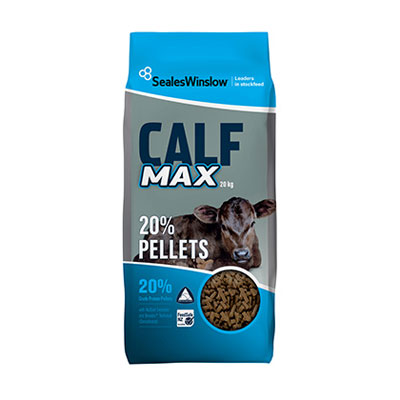Calf Rearing Advice
The role of quality in calf meal
The choice of calf meal is a critical decision. Take a moment to look at the factors that play a role.
Is there truth in the old saying that you get what you pay for? Let’s put it like this: it certainly makes sense to take a good look at the nutritional requirements that need to be met with calf meal and compare it to what’s on offer.
During the first few weeks in a calf’s life, muesli and/or pellets in addition to some hay or straw for roughage are a great feed complement to milk. Hay or straw is invaluable for the developing rumen; specifically for the development of the rumen musculature.
So, what should you look out for in feed?
Fresh and consistent taste
First and foremost, the feed should arrive smelling fresh and be palatable to calves. Premium calf feeds are formulated to high nutritional standards, however if calves don’t like the taste they simply won’t eat it. Calf feed should smell fresh and taste great.
It’s important to look for a product that offers consistency of formulation and ingredients. What’s more, it should only contain quality ingredients without “fillers” such as palm kernel or waste from confectionery, chocolate or biscuit manufacturing. These fillers are used because they’re cheap to source. However, the inclusion of them makes it difficult to achieve a consistent product, because the material itself is quite variable.
This leads to vast variations which typically come to bear in the calf pen once calves are faced with a pellet that suddenly tastes different. Being averse to change, calves immediately notice any such deviations and naturally respond with feed refusal along with a resulting growth check.
A consistent formulation, by contrast, tastes the same – every time. Further, to ensure calves continue eating, it is recommended staying with the same brand, making the transition from starter to post-weaning feed as smooth as possible.
Proteins aren’t created equal
It’s important to select a feed with the right protein content. Pellets with 20% crude protein, for instance, are specifically formulated for the needs of the very young calf, while the 16% equivalent is designed for older calves that are already getting some protein from pasture.
In terms of the protein, it’s worthwhile to examine the source. Ideally your feed should contain a high level of amino acids that help the calf grow lean tissue. These amino acids come from quality plant ingredients such as peas, soya bean, cottonseed and canola meals.
Low quality calf feeds may add urea to improve the protein percentage, however urea merely increases crude protein levels in laboratory tests. It does not provide the vital amino acids which are building blocks for calf growth. Ultimately, it’s not a ‘true’ protein and cannot be utilised by calves.
Vitamins
Vitamins and minerals are essential for calves. Premium calf feeds are formulated by nutritionists to provide the ideal balance for calf health and development, e.g. calcium and phosphorus levels must be balanced to ensure good calf growth. Other vitamins and minerals, particularly vitamin E and selenium, need to be included for immune function, to help fight off disease.
Coccidiostat
A coccidiostat, such as Rumensin or Bovatec is essential to prevent coccidiosis, and must be included in calf feed at a rate to suit calf size.
To ensure calves consume the required rates it is essential there is sufficient trough space for all calves to eat at the same time, otherwise some may gorge and therefore overdose, while those that don’t get to the trough, mayunderdose.
The dosage can also be insufficient in high milk systems if calves don’t consume sufficient meal. In those cases supplementation via the milk will be necessary for calves to gain the health benefits.

Calf 20% Pellets 20kg
A pelleted feed, combining grains, vegetable protein meals and molasses with 20% crude protein and includes the SealesWinslow exclusive NuStart. The protein is sourced from a range of quality vegetable proteins to maximise lean tissue growth.

